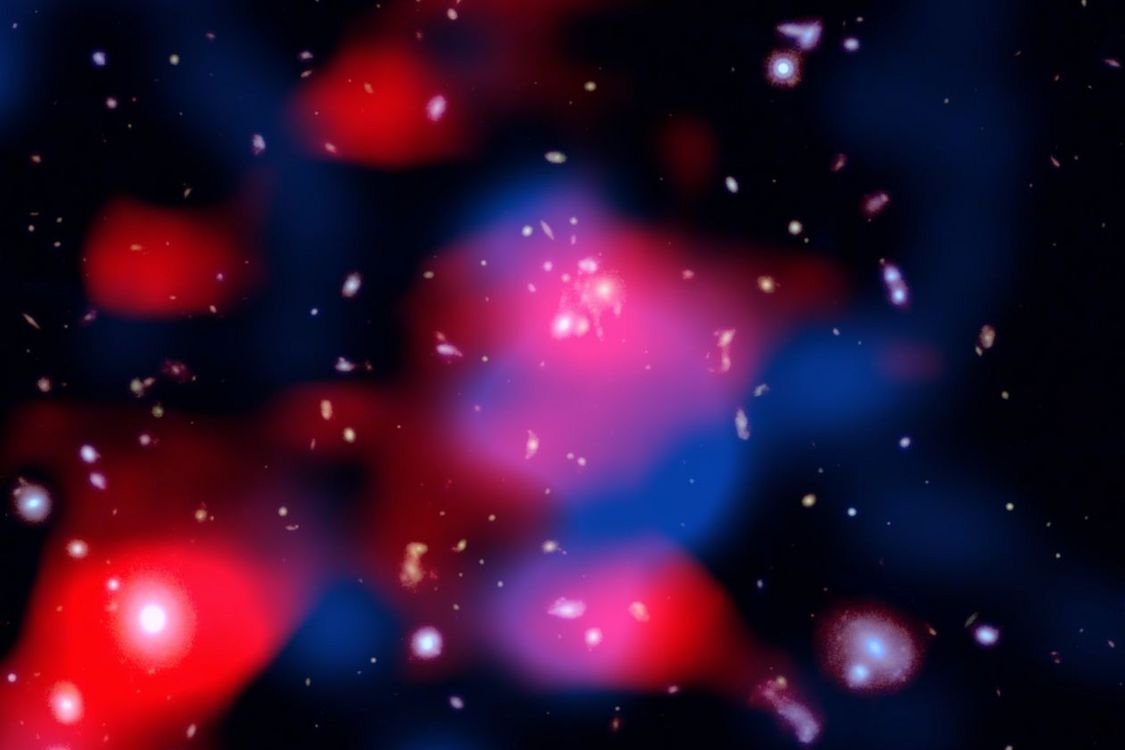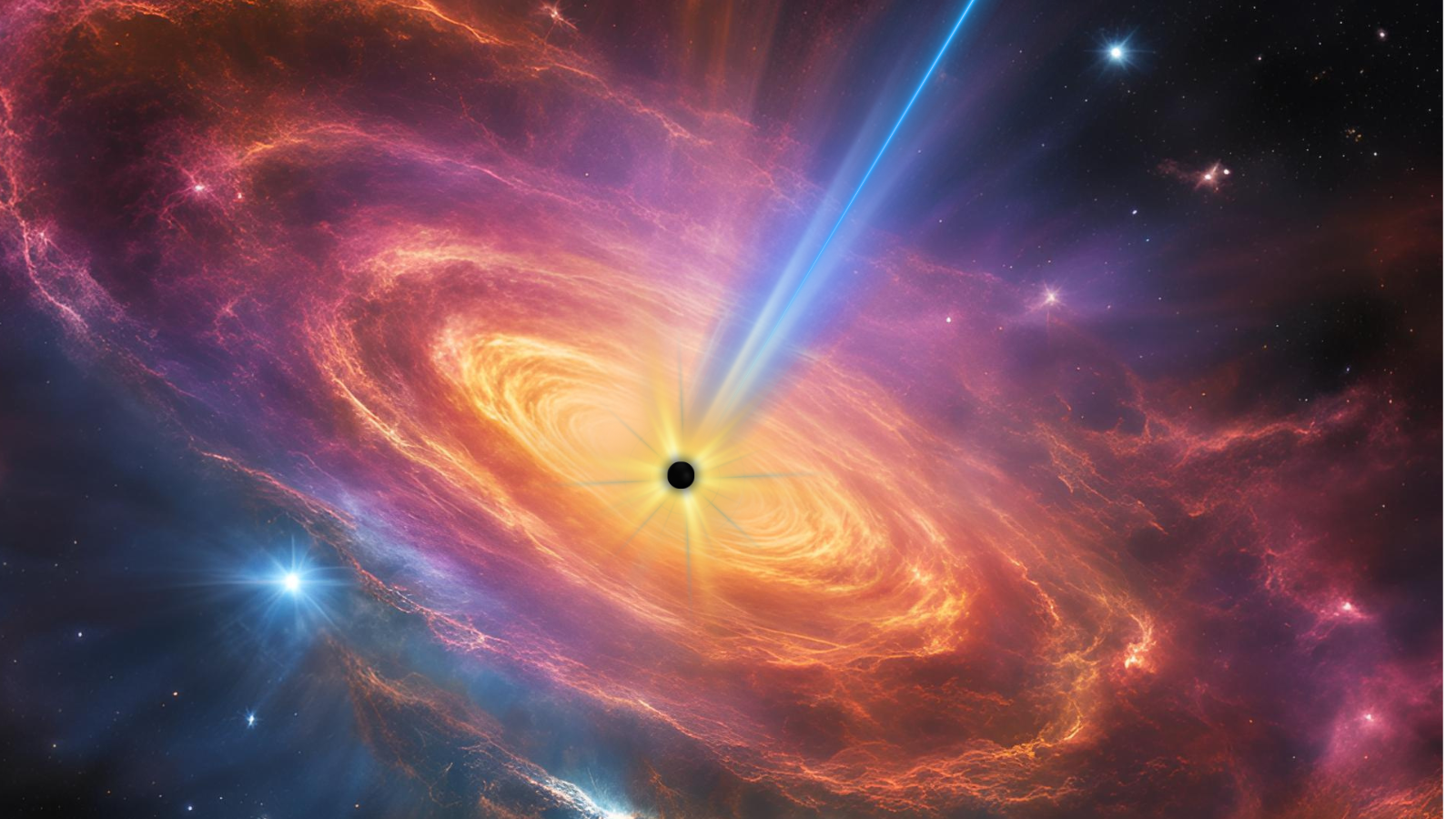Astonishing 'halo' of high-energy particles around giant galaxy cluster is a glimpse into the early universe
"It's astonishing to find such a strong radio signal at this distance."

A vast cloud of energetic particles surrounding a cluster of galaxies that existed around four billion years after the Big Bang could help scientists discover how the early universe took shape.
But was the halo of the massive cluster of galaxies — called SpARCS104922.6+564032.5, and located 9.9 billion light-years from Earth— built by erupting supermassive black holes or a cosmic particle accelerator?
This envelope of radio-emitting particles — a so-called "radio mini-halo," though it isn't really mini at all — is the most distant example of such a structure ever detected. Its distance is double that of the next farthest radio mini-halo, with its radio signal having taken 10 billion years to reach Earth — the majority of the universe's 13.8 billion-year lifespan.
The discovery, made with the LOFAR (LOw Frequency ARray) radio instrument in Europe, indicates that galaxy clusters, which are some of the largest structures in the known universe, spend most of their existence wrapped in envelopes of high-energy particles.
This insight gives scientists a better idea of how energy flows around galaxy clusters. And that in turn could improve our picture of cosmic evolution, study members said.
"It's astonishing to find such a strong radio signal at this distance," study co-leader Roland Timmerman, an astronomer at Durham University in England, said in a statement. "It means these energetic particles and the processes creating them have been shaping galaxy clusters for nearly the entire history of the universe."
What gave this cluster its halo?
The team posited two possible explanations for the formation of this mini-halo.
Breaking space news, the latest updates on rocket launches, skywatching events and more!
One possibility is that the supermassive black holes at the hearts of the galaxies in the cluster are ejecting jets of high-energy particles and settling around their home cluster.
One problem with this theory, however, is explaining how these particles have managed to maintain their energy as they take their place in a gigantic cloud.
The second possible explanation is the existence of a natural particle collider around the galactic cluster.
Particles in the hot ionized gas, or plasma, around the cluster may be slamming together at near light-speeds, resulting in the highly energetic particles in the halo.
The team behind the new research believes their results offer a rare chance to observe a galaxy cluster just after it has formed.
It also suggests that galactic clusters are filled with energetic particles for billions of years longer than had previously been thought. And further study of this distant radio mini-halo should reveal just where these charged particles originated, according to the scientists.
The team's research has been accepted for publication in the Astrophysical Journal Letters, with a preprint version available on the research repository arXiv.

Robert Lea is a science journalist in the U.K. whose articles have been published in Physics World, New Scientist, Astronomy Magazine, All About Space, Newsweek and ZME Science. He also writes about science communication for Elsevier and the European Journal of Physics. Rob holds a bachelor of science degree in physics and astronomy from the U.K.’s Open University. Follow him on Twitter @sciencef1rst.
You must confirm your public display name before commenting
Please logout and then login again, you will then be prompted to enter your display name.

